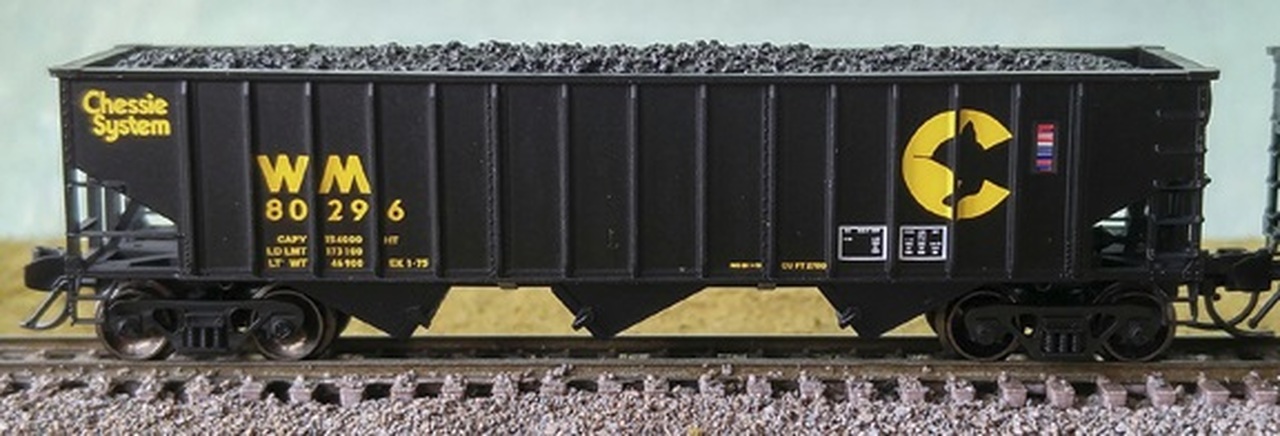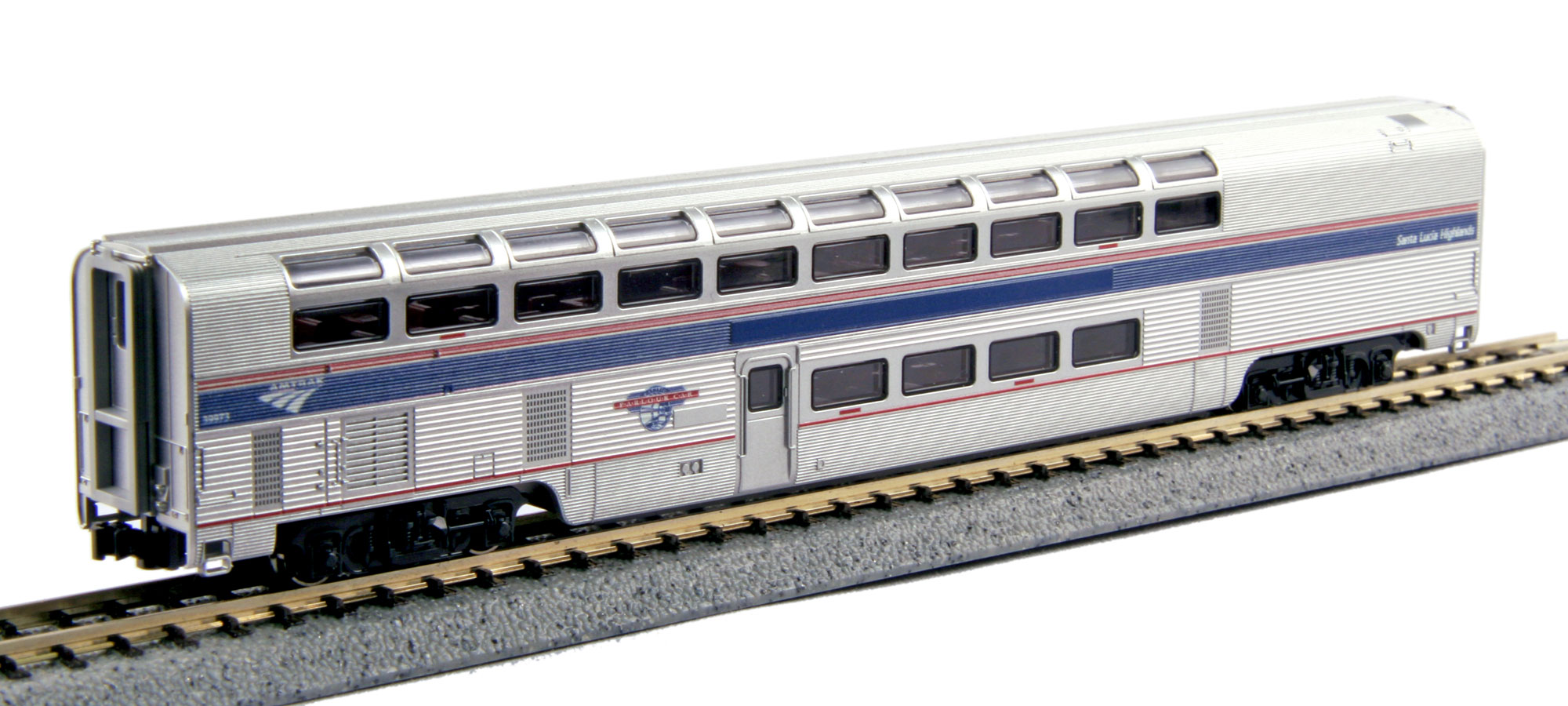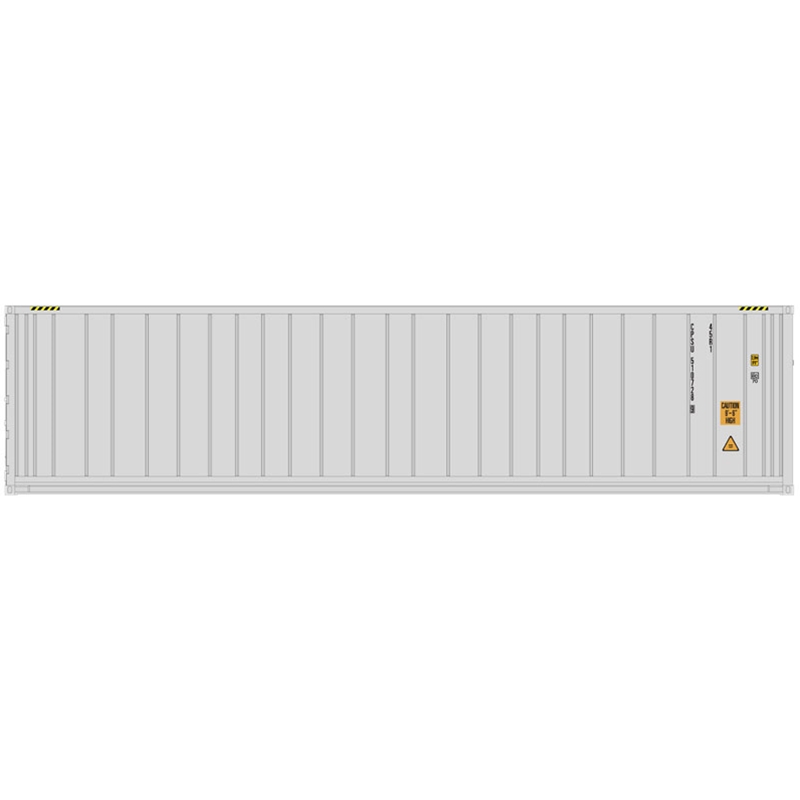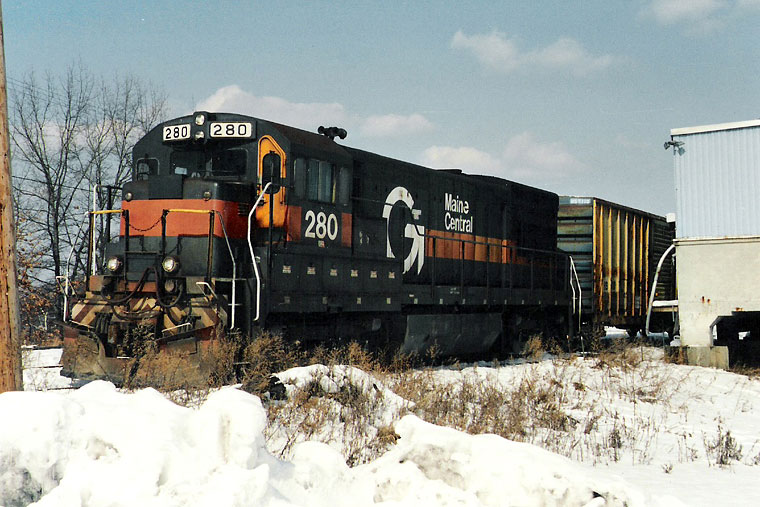Specific Item Information: MASTER MODEL FEATURES:
• Operational low nose headlight (used where appropriate)
• Both DCC ready and DCC equipped versions
• Separate coupler cut lever
• Cab with 4 or 2 side windows (as appropriate per road name)
• Directional lighting
• Golden white LEDs
• Painted safety rails
• Blackened metal wheels
• Dual flywheel equipped 5-pole skewed armature motor with a low friction mechanism
• Factory-installed AccuMate® magnetic knuckle couplers!
Model Information: This model was introduced by Atlas in 2006. It features
Operational low nose headlight (used where appropriate);
Separate coupler cut lever;
Cab with 4 or 2 side windows (as appropriate per road name);
Golden white LEDs;
Painted safety rails;
Dual flywheel equipped 5-pole skewed armature motor with a low friction mechanism.
DCC Information: The chassis is fully DCC-Ready and, in is usually available with factory-installed decoder. The model is a modern split-frame design and accepts drop-in decoders.
Prototype History: The GE U23B Diesel-electric locomotive was introduced by GE Transportation in 1968 as a medium horsepower roadswitcher, featuring a 12 cylinder FDL engine. It was one of the most successful models of the Universal Series, with railroads ordering it from 1968 until 1977 when it was replaced by the B23-7. 481 units were built, including 16 exported to Peru.
Not many U23Bs still exist, but a few shortline and regional railroads still use them in everyday service. The Georgia Central Railway was one of the last U23B holdouts, rostering almost all of the remaining ex Southern Railway (U.S.) high short hood U23Bs. The Georgia Central as of July 2015 has all of its U23Bs off of the roster with the 3965 going to the Southern Appalachia Railway Museum in Oak Ridge, TN.
The Huntsville and Madison County Railroad Authority in Huntsville, AL, operates perhaps one of the last U23B's used in daily freight service, as of October 2015. HMCR 9554 was originally built in late 1974 as L&N 2800. The last U23B built, originally Conrail 2798, and more recently Providence and Worcester 2203, is in regular excursion service at the Naugatuck Railroad, operated by the Railroad Museum of New England in Thomaston, Connecticut. Western Rail Inc in Airway Heights, WA currently has a U23B that you can lease. It was used on the Eastern Washington Gateway Railroad as of 2017 for freight service. It is numbered NIWX 2204 and is a ex Northern Illinois and Western locomotive.
The Huntsville and Madison County Railroad Authority in Huntsville, AL, operates perhaps one of the last U23B's used in daily freight service, as of October 2015. HMCR 9554 was originally built in late 1974 as L&N 2800. The last U23B built, originally Conrail 2798, and more recently Providence and Worcester 2203, is in regular excursion service at the Naugatuck Railroad, operated by the Railroad Museum of New England in Thomaston, Connecticut. Western Rail Inc in Airway Heights, WA currently has a U23B that you can lease. It was used on the Eastern Washington Gateway Railroad as of 2017 for freight service. It is numbered NIWX 2204 and is a ex Northern Illinois and Western locomotive.
Road Name History:  The Lehigh Valley Railroad (reporting mark LV) was one of a number of railroads built in the northeastern United States primarily to haul anthracite coal. It was authorized April 21, 1846 in the U.S. state of Pennsylvania and incorporated/established on September 20, 1847 as the Delaware, Lehigh, Schuylkill and Susquehanna Railroad Company. On January 7, 1853, the name was changed to Lehigh Valley Railroad. It was sometimes known as the Route of the Black Diamond, named after the anthracite it transported. At the time, anthracite was transported by boat down the Lehigh River; the railroad was meant to be faster transportation. The railroad ended operations in 1976 and merged into Conrail that same year.
The Lehigh Valley Railroad (reporting mark LV) was one of a number of railroads built in the northeastern United States primarily to haul anthracite coal. It was authorized April 21, 1846 in the U.S. state of Pennsylvania and incorporated/established on September 20, 1847 as the Delaware, Lehigh, Schuylkill and Susquehanna Railroad Company. On January 7, 1853, the name was changed to Lehigh Valley Railroad. It was sometimes known as the Route of the Black Diamond, named after the anthracite it transported. At the time, anthracite was transported by boat down the Lehigh River; the railroad was meant to be faster transportation. The railroad ended operations in 1976 and merged into Conrail that same year.
During its existence, the Lehigh Valley Railroad used a rail line that later became known as the Lehigh Line in order for it to operate. The Lehigh Line was the railroad's first rail line constructed which was built in 1855 between Easton, Pennsylvania and Allentown, Pennsylvania and it served as the main line for the Lehigh Valley Railroad. Serving as the main line for the Lehigh Valley Railroad, the rail line expanded past Allentown to Buffalo, New York and past Easton to New York City, bringing the Lehigh Valley Railroad to these metro areas. During the early years, the line served as the body of the Lehigh Valley Railroad until the railroad either built more rail lines or railroads, acquired more rail lines or railroads, and merged other railroads into their system. The line was known as the Lehigh Valley Mainline during the majority of its time under the ownership of the Lehigh Valley Railroad, starting in the 1930s. The "Lehigh Valley" was absorbed along with several northeastern rail lines into Conrail; the main line became known as the Lehigh Line during the Conrail ownership. Conrail shortened the track miles by abandoning most of its route to Buffalo and some of the line entering New York City area. The Lehigh Line is now owned by the Norfolk Southern Railway.
As of 31 Dec 1925, 1363.7 miles of road, 3533.3 miles of track; as of 31 Dec 1970, 927 miles of road and 1963 miles of track.
From Wikipedia

During its existence, the Lehigh Valley Railroad used a rail line that later became known as the Lehigh Line in order for it to operate. The Lehigh Line was the railroad's first rail line constructed which was built in 1855 between Easton, Pennsylvania and Allentown, Pennsylvania and it served as the main line for the Lehigh Valley Railroad. Serving as the main line for the Lehigh Valley Railroad, the rail line expanded past Allentown to Buffalo, New York and past Easton to New York City, bringing the Lehigh Valley Railroad to these metro areas. During the early years, the line served as the body of the Lehigh Valley Railroad until the railroad either built more rail lines or railroads, acquired more rail lines or railroads, and merged other railroads into their system. The line was known as the Lehigh Valley Mainline during the majority of its time under the ownership of the Lehigh Valley Railroad, starting in the 1930s. The "Lehigh Valley" was absorbed along with several northeastern rail lines into Conrail; the main line became known as the Lehigh Line during the Conrail ownership. Conrail shortened the track miles by abandoning most of its route to Buffalo and some of the line entering New York City area. The Lehigh Line is now owned by the Norfolk Southern Railway.
As of 31 Dec 1925, 1363.7 miles of road, 3533.3 miles of track; as of 31 Dec 1970, 927 miles of road and 1963 miles of track.
From Wikipedia
Brand/Importer Information: In 1924 Stephan Schaffan, Sr. founded the Atlas Tool Company in Newark, New Jersey. In 1933 his son, Stephan Schaffan, Jr., came to work for his father at the age of sixteen. Steve Jr. built model airplanes as a hobby and frequented a local hobby shop. Being an enterprising young man, he would often ask the owner if there was anything he could do to earn some extra spending money. Tired of listening to his requests, the hobby-store owner threw some model railroad track parts his way and said, "Here, see if you can improve on this".
In those days, railroad modelers had to assemble and build everything from scratch. Steve Jr. created a "switch kit" which sold so well, that the entire family worked on them in the basement at night, while doing business as usual in the machine shop during the day.
Subsequently, Steve Jr. engineered the stapling of rail to fiber track, along with inventing the first practical rail joiner and pre-assembled turnouts and flexible track. All of these products, and more, helped to popularize model railroading and assisted in the creation of a mass-market hobby. The budding entrepreneur quickly outgrew the limitations of a basement and small garage operation. Realizing they could actually make a living selling track and related products, Steve and his father had the first factory built in Hillside, New Jersey at 413 Florence Avenue in 1947. On September 30, 1949, the Atlas Tool Company was officially incorporated as a New Jersey company.
In 1985, Steve was honored posthumously for his inventions by the Model Railroad Industry Association and was inducted into the Model Railroad Industry Hall of Fame in Baltimore, Maryland. In addition, Steve was nominated and entered into the National Model Railroad Association Pioneers of Model Railroading in 1995.
In the early 1990s, the Atlas Tool Company changed its name to Atlas Model Railroad Company, Inc.
In those days, railroad modelers had to assemble and build everything from scratch. Steve Jr. created a "switch kit" which sold so well, that the entire family worked on them in the basement at night, while doing business as usual in the machine shop during the day.
Subsequently, Steve Jr. engineered the stapling of rail to fiber track, along with inventing the first practical rail joiner and pre-assembled turnouts and flexible track. All of these products, and more, helped to popularize model railroading and assisted in the creation of a mass-market hobby. The budding entrepreneur quickly outgrew the limitations of a basement and small garage operation. Realizing they could actually make a living selling track and related products, Steve and his father had the first factory built in Hillside, New Jersey at 413 Florence Avenue in 1947. On September 30, 1949, the Atlas Tool Company was officially incorporated as a New Jersey company.
In 1985, Steve was honored posthumously for his inventions by the Model Railroad Industry Association and was inducted into the Model Railroad Industry Hall of Fame in Baltimore, Maryland. In addition, Steve was nominated and entered into the National Model Railroad Association Pioneers of Model Railroading in 1995.
In the early 1990s, the Atlas Tool Company changed its name to Atlas Model Railroad Company, Inc.
Item created by: CNW400 on 2019-04-18 14:36:19. Last edited by Alain LM on 2020-06-06 12:07:10
If you see errors or missing data in this entry, please feel free to log in and edit it. Anyone with a Gmail account can log in instantly.
If you see errors or missing data in this entry, please feel free to log in and edit it. Anyone with a Gmail account can log in instantly.










